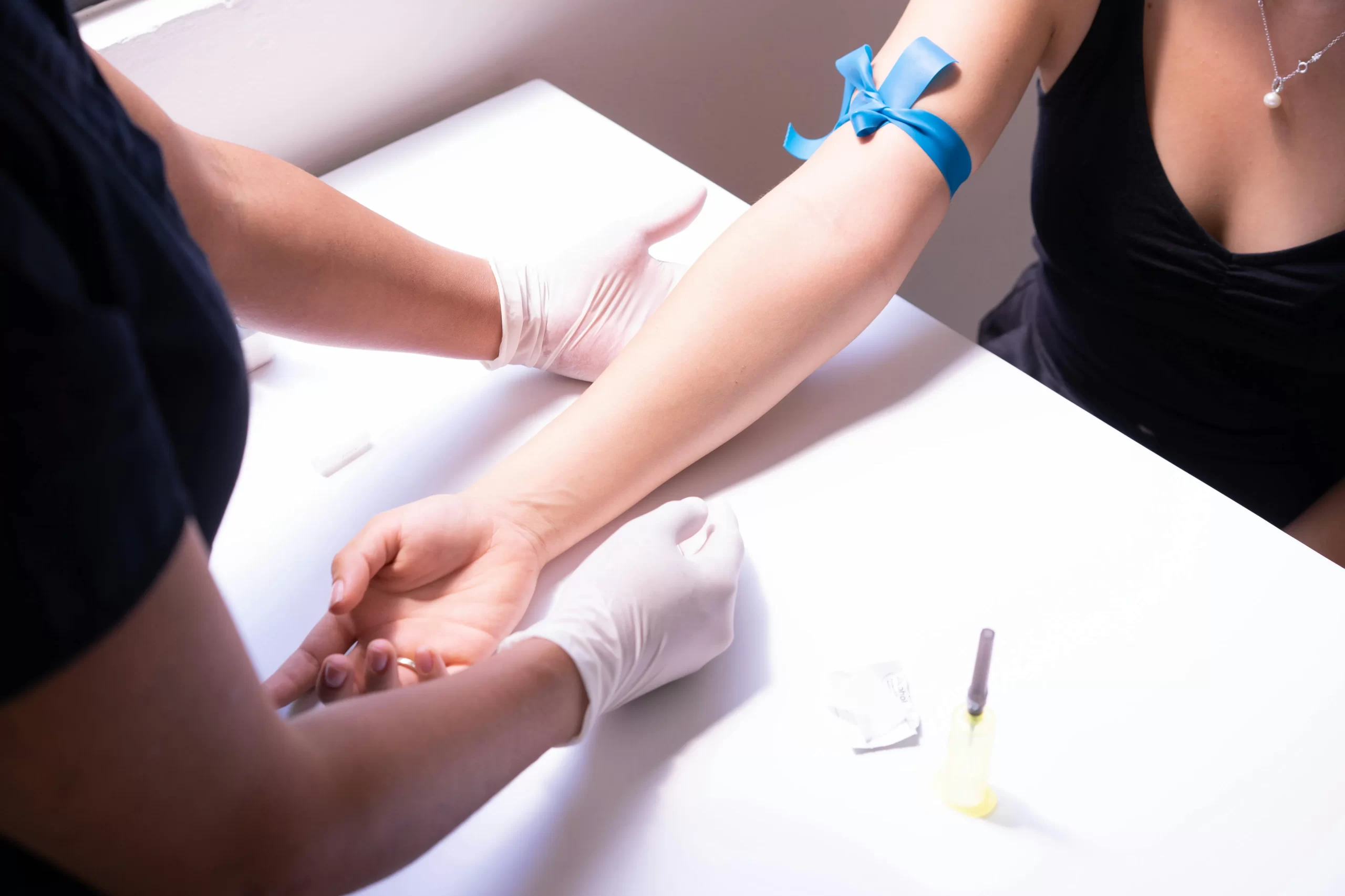When maternal blood is taken in a prenatal paternity test, the process itself may technically be treated as part of a medical procedure, as it takes place in a medical institution and involves a doctor or medical professional. However, as the purpose of the paternity test is not medical, but to confirm the parent-child relationship, the treatment of the test as a ‘medical procedure’ may vary depending on the circumstances.
The following section details the prenatal paternity test and its related ‘medical practice’ aspects.
1. Types of prenatal paternity tests
Prenatal paternity testing includes the following methods
a) Non-invasive DNA testing with maternal blood tests (NIPP)
- METHOD: Fetal DNA in the mother’s blood is analysed to confirm parent-child relationships.This is done using only blood samples from the mother, making it safe and virtually risk-free.
- Relationship to medical practice: this part of the procedure falls under the category of ‘medical practice’, as the blood sampling from the mother is carried out by a medical professional. However, as the paternity test itself is an examination to confirm the parent-child relationship and not an act for the purpose of treatment, the test itself is generally not considered a medical act.
b) Amniotic fluid and chorionic villus tests.
- Methods: amniotic fluid and chorionic villi (placental tissue) are collected and analysed directly for foetal DNA to confirm parent-child relationships.These tests are invasive and are performed by a specialist doctor at a medical institution.
- Relationship to medical practice: amniotic fluid and chorionic villus sampling is an invasive procedure and is clearly treated as a ‘medical procedure’ because of the risk of complications and miscarriage.A doctor performs the procedure and medical supervision is required to manage the patient’s health and avoid risks.
2. The difference between medical practice and paternity testing
Although some of the processes involved in paternity testing (e.g. blood sampling from the mother or amniotic fluid sampling) technically constitute medical practice, the purpose of paternity testing itself is not for medical purposes, but to confirm the legal and personal parent-child relationship. For this reason, differences exist between medical practice and paternity testing in the following respects
- Purpose of medical treatment: common medical treatments are aimed at diagnosing, treating and preventing diseases and disorders. For example, amniotic fluid tests and blood tests are usually performed to check the health of the fetus.
- Purpose of paternity testing: the purpose of paternity testing is to confirm parent-child or blood relationship, as opposed to medical treatment or diagnosis.Its purpose is non-medical, as it is often used as legal evidence.
3. The boundary between medical practice and legal procedures
Paternity appraisals, by their nature, are often related to legal issues (e.g. recognition, child support, inheritance rights).For this reason, even when part of a medical procedure is incorporated into a paternity test, the test itself is generally not considered a medical procedure, as its ultimate purpose is to confirm a legal procedure or personal relationship.
4. Risks and ethical aspects
Invasive prenatal paternity testing (amniotic fluid and chorionic villus sampling) in particular involves risks.For this reason, it is important that the risks are fully discussed with the doctor and understood.Ethically, the reasons for confirming parent-child relationships before birth and the decisions based on the results should be carefully considered.
5. The evolution of paternity testing during pregnancy
Recent technological advances have made non-invasive DNA testing (NIPP) using maternal blood a popular, low-risk and safe method.As this method allows for paternity testing using only a blood sample from the mother, the medical element is reduced and is increasingly being treated as a more personalised service.
Summary
In prenatal paternity testing, blood sampling from the mother and amniotic fluid and chorionic villi sampling are performed by a medical professional and therefore constitute ‘medical practice’. However, as the paternity test itself is not a medical treatment or medical examination, but a legal and personal test aimed at confirming the parent-child relationship, the entire process of the test is not usually considered a ‘medical procedure’.
If you are considering a paternity test, particularly a prenatal test, it is important that you consult your doctor and are fully informed about the risks and procedures involved.
Latest Articles
Supervisor of the article

Dr. Hiroshi Oka
Graduated from Keio University, Faculty of Medicine
Doctor of Medicine
Medical Doctor









